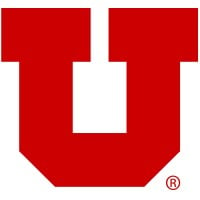Company Cyber Security Posture
NANA
NA Company Details
NA
NA
NA
NA
NA
NA
Scan still pending
NA
NA
Between 200 and 800
This score is AI-generated and less favored by cyber insurers, who prefer the TPRM score.
 NA Global Score
NA Global Score.png)

Company Scoring based on AI Models
| Model Name | Date | Description | Current Score Difference | Score |
|---|---|---|---|---|
| AVERAGE-Industry | 03-12-2025 | This score represents the average cybersecurity rating of companies already scanned within the same industry. It provides a benchmark to compare an individual company's security posture against its industry peers. | N/A | Between 200 and 800 |
Company Cyber Security News & History
| Entity | Type | Severity | Impact | Seen | Url ID | Details | View |
|---|
Company Subsidiaries

NA
Access Data Using Our API

Get company history
.png)
NA Cyber Security News
Capture The (Cyber) Flag
The Cyber Skyline logo features the company name in bold, uppercase blue letters. " The competition platform is provided by Cyber Skyline and ...
Coding Bootcamps with Job Guarantee in Stamford in 2025
UConn's part-time 24-week bootcamp, highly rated by students, covers foundational web technologies including HTML5, CSS3, JavaScript, Node.js, ...
Internet user finds weakness in UConn webpage: How students can stay secure
Cybersecurity teams within the Information Technology Systems department at the University of Connecticut have recently fixed a webpage vulnerability.
UConn Health Files Notice of Data Breach with Federal Government
UConn Health explains that the incident resulted in an unauthorized party being able to access consumers' sensitive information.
A ‘Blueprint for Mass Cybercrime’
New data breach, affecting 16 billion passwords and usernames, is an expansive threat for both individuals and institutions.
CCSU debuts new Cybersecurity Hall, partners with biz to keep pace with ever-evolving cybersecurity threats
Seven years ago, Central Connecticut State University didn't offer a cybersecurity course.By 2019, the state university enrolled 49 students ...
UConn One Of Six Universities To Receive Federal Funding For New Cybersecurity Centers
The University of Connecticut is one of six universities to be selected to establish a new cybersecurity center for research, education, and workforce training.
Cybersecurity To Be Discussed At Event Hosted By Fairfield University
Cybersecurity To Be Discussed At Event Hosted By Fairfield University - Fairfield, CT - "Cybersecurity: Protecting Yourself in a Digital ...
Expanding Connecticut’s Tech Workforce
The Connecticut Tech Talent Accelerator, an idea of the state's Office of Workforce Strategy, was launched in 2022, to create pathways from the state's public ...

NA Similar Companies

The University of Kansas
KU is a major comprehensive research and teaching university and a center for learning, scholarship, and creative endeavor. KU is the only Kansas Regents university to hold membership in the prestigious Association of American Universities (AAU), a select group of public and private research univers

Boston University School of Public Health
Ranked in the top 10 schools and programs of public health in the world by US News and World Report, Boston University School of Public Health provides the opportunity to engage in world-renowned research, scholarship, social justice, and public health practice. Founded in 1976, BUSPH offers master

School of Hard Knocks
The School of Hard Knocks (also referred to as the University of Life or University of Hard Knocks) is an idiomatic phrase meaning the (sometimes painful) education one gets from life's usually negative experiences, often contrasted with formal education. It is a phrase which is most typically use

Bright Horizons UK
This is more than childcare. This is childhood. We have a network of over 300 Bright Horizons nurseries delivering exceptional care and education. In our nurseries, our teams practice our unique Nurture Approach; an evidence-based blend of holistic learning alongside support for children’s emoti

The Johns Hopkins University
We are America’s first research university, founded in 1876 on the principle that by pursuing big ideas and sharing what we learn, we can make the world a better place. For more than 140 years, our faculty and students have worked side by side in pursuit of discoveries that improve lives. Johns Hop

University of Utah
The University of Utah, located in Salt Lake City in the foothills of the Wasatch Mountains, is the flagship institution of higher learning in Utah. Founded in 1850, it serves over 31,000 students from across the U.S. and the world. With over 72 major subjects at the undergraduate level and more tha

Frequently Asked Questions
Explore insights on cybersecurity incidents, risk posture, and Rankiteo's assessments.
NA CyberSecurity History Information
How many cyber incidents has NA faced?
Total Incidents: According to Rankiteo, NA has faced 0 incidents in the past.
What types of cybersecurity incidents have occurred at NA?
Incident Types: The types of cybersecurity incidents that have occurred include .
Additional Questions
What Do We Measure?
















Every week, Rankiteo analyzes billions of signals to give organizations a sharper, faster view of emerging risks. With deeper, more actionable intelligence at their fingertips, security teams can outpace threat actors, respond instantly to Zero-Day attacks, and dramatically shrink their risk exposure window.
These are some of the factors we use to calculate the overall score:
Identify exposed access points, detect misconfigured SSL certificates, and uncover vulnerabilities across the network infrastructure.
Gain visibility into the software components used within an organization to detect vulnerabilities, manage risk, and ensure supply chain security.
Monitor and manage all IT assets and their configurations to ensure accurate, real-time visibility across the company's technology environment.
Leverage real-time insights on active threats, malware campaigns, and emerging vulnerabilities to proactively defend against evolving cyberattacks.




